When buying a used car one has to be careful otherwise you may end up with someone else’s headache. Tips below are definitely going to help you in inspecting a used car.
Tips on buying a used Car

Follow the list given below, point to point explained how to check a used car. Recently we published an article Tips on Buying a new car
- Interior
- Brake Pedals
- Driver’s seat
- Steering wheel and Gear Knob
- Floor mats and carpet
- Odometer
- Water spots
- Body Exterior
- Engine
- Visual Check
- Sound
- Transmission
- Corrosion
- Suspension
- Documents
- Online Vehicle Verification
Interior
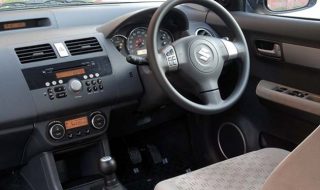 The condition of the interior is an important factor to consider when purchasing a used car. excessive wear and tear on the interior may actually be a good indicator of the vehicle’s mileage without even looking at the odometer. Additionally, dampness and musty odors, while not indicators of excess mileage, point to potential leaks in the weather strips, wind shield or the vehicle’s heater core. Foggy windows indicate excessive moisture inside the vehicle.
The condition of the interior is an important factor to consider when purchasing a used car. excessive wear and tear on the interior may actually be a good indicator of the vehicle’s mileage without even looking at the odometer. Additionally, dampness and musty odors, while not indicators of excess mileage, point to potential leaks in the weather strips, wind shield or the vehicle’s heater core. Foggy windows indicate excessive moisture inside the vehicle.
buying a used car Indicators
Brake Pedals
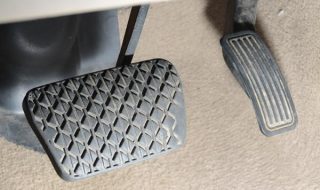
A Brake Pedal pad that has worn through to the metal beneath it is a good indication of a vehicle with excessive mileage. Think of all the stop and go traffic it took to wear through the rubber. Not to mention the wear on the braking system if the odometer shows 12000 kilometers.
Driver’s Seat
Take a close look at the driver seat for indication of excessive mileage. If the seat’s door side edge has worn through, chances are the vehicle high miles on it or has be abused by a careless or heavy driver. Seats with covers on them can also show excessive wear. In this case, press down on the door-side edge to see how it compares with the other edge.
Steering Wheel and Gear shift knob
Worn out steering wheels and gear shift knobs are also strong indicators that the car has been used quite extensively and must have high miles on it. Look for worn out and smooth texture on these two parts very closely.
Floor Mats and Carpet
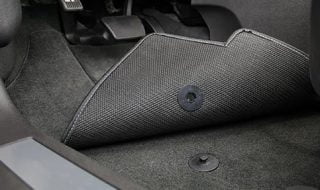
Don’t be fooled by a new set of floor mats. This is one of the cheapest and easiest ways to dress up a worn interior. while inspecting the condition of the interior, lift up the mats and feel the carpet to check for water leaks and wear on the right of the accelerator pedal and underneath.
Odometer and Gauges

Take a close look at the Instrument panel to see if it has be tampered with. Indications that an odometer has been tampered with are fingerprints or scratches inside the plastic cover. If the mileage of a manual odometer has been tampered with, the numbers may not be aligned evenly across. Look for scratch marks on the numbers which usually indicate a crude attempt at fixing the mileage with a pointed tool.
Digital Odometer
It is highly unlikely traceable to find if the odometer has been tampered, usually car dealers are expert on this and shouldn’t be believing on the auction sheet or manual provided with the vehicle, only thing which can help in this regard would be the condition of the vehicle.
Water Spots
In car equipped with sunroofs, water marks on the headliner are good indicators of a leak. This results from a rusted sunroof or worn weather-strips around the sunroof.
Body Exterior
When buying a used car Don’t be fooled by shiny paint-jobs or flashy Rims. There could be major problems hidden beneath. Make a thorough visual inspection of the complete exterior of the vehicle. Check all body panels to see if anything has been repainted. Also check if to see if any of the front-end panels have been replaced or realigned. One way to check for repainted panels is to look at the colors of adjoining panels. Does the door match the front fender? If the whole vehicle was repainted there is a good chance that the plastic moldings or lights will have over-spray paint on them. When a front-end panel has been replaced, the paint on the inside will be fresh and clean as opposed to the rest of the car. Another way to see if the vehicle has been in a collision is to look at gaps between panels. Make sure both sides of the vehicle have the same gaps between panels. Body alignment should include the opening and closing of hood, trunk and doors as well as how easy the hood opens when pulling the release cable.
Engine

Engine is the heart of the vehicle and should scrutinized. Before you start the vehicle take a look at the overall condition of the engine area. Is it clean or oil filled, dirty and clearly neglected? many owners bring their dirty engine compartment to the car wash to be power washed with a high pressure hose using degreasing fluid or hot water. If the engine is the only clean part of the vehicle this is probably the case and cause for extra attention to what you cannot see. The internal parts of an engine depends on oil to live. Check the Oil first. If the oil is clean or brown, but not black, ask when the last oil change was completed. If the oil was changed that morning or recently, remember to check the oil again after your test drive. If it is black after the drive, there is serious wear and the price should reflect that. Check the Vehicle verification section below for more information.
Visual Checks
Make sure the engine oil is at full level. This will tell you if the engine is leaking or burning oil. Even if the oil level is full, the motor can still have an oil consumption problem. Look under the front of the car for oil leaks. Common sources of leaking oil are valve covers, oil pan and front and rear engine seals. Any oil visible on the sides of the engine is the good indication of these problems. One way to check inside of the engine for sludge and oil build up. This inspection will indicate how often the oil was changed and if the engine was neglected. A well maintained engine, regardless of mileage, will be fairly clean inside.
Ideally start the engine cold to assess for difficulty in starting. Blue smoke indicates oil being burnt or sucked into the cylinders, perhaps through worn valves. Let the motor run for a while at idle, Then rev the engine slightly and check the exhaust pipe for smoke, Thus indicating an oil burning problem. Engines with these problems should be avoided unless you want to spend alot of time at the workshop.
Sounds
One final check of the engine would be to let it run and reach operating temperature. When the engine is good and hot, rev it slightly and listen for any noises like a rod bearing knock or a weak hydraulic lifter tick.Knocking or ticking sound that increases with engine speed usually represent significant problems and costly repairs. If you are not able to assess these sounds yourself, call a mechanic for inspection, should you still be interested in the vehicle. Do not buy on impulse because the car is the color you like, while the engine is blowing smoke or knocking. There is always another car out there, so avoid hasty decisions.
Suspension
Place the car on hard, level ground, keep the front wheels straight, and make sure tyre pressure is correct, and then look at the car from a distance for a few seconds. If the car is leaning to one side then there is a problem with the suspension.
Press down on all four corners of the car to make sure that all springs and shock absorbers feel about the same. If one side is softer than the other then also there is a problem with the suspension. This problem can also be assessed by driving the vehicle on a slightly bumpy road. If the car bounces and sways from side to side then the shock absorbers are bad.
Transmission
Transmission replacement or repair comes at a high price. Check the fluid for color, smell and level. The fluid should be reddish in color. It should not be brown or black, which may indicate transmission neglect and possible internal damage. Automatic transmission fluid level should be checked at operating temperature with the car on level ground, with the transmission in park, emergency brake on with the engine running at idle speed. In some cases, fluid has to be checked with the transmission in neutral.
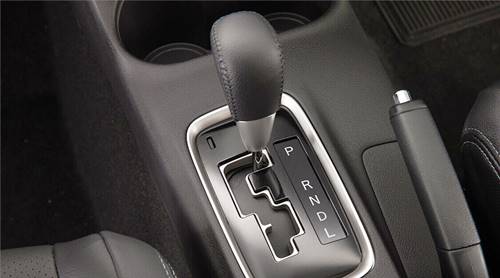
Another visual check would be to look under the vehicle for transmission leaks. A spotted driveway is a good indication of leaks. After all visual checks have been made, take the vehicle on a road test before you move the car, give the vehicle a little gas. Do you hear any whining? This could indicate possible internal damage or wear. Check an automatic transmission for the way it engages gear. First shift from park to drive. Note how long it takes the transmission to engage then shift from drive to reverse and observe the amount of time it takes to engage. The transmission should engage firmly, not slide into gear, nor should it take very long to engage. At the same time, listen for noises, example banging, grinding, whining and squeaking. Any of these noises would indicate a worn or broken engine or transmission mount or possible internal problems. On newer vehicles, engine idle settings have a lot to do with transmission performance and engagement. If an engine is out of specifications (not performing properly, idle speed tampered with) the transmission will not operate properly.
When road testing the vehicle, observe transmission shift points when the transmission shift gears. The shift points should be smooth, yet positive and firm. You do not want the transmission to slip into gears or slam in. Both of these symptoms present a problem. Make sure you get the vehicle up to highway speed to ensure you have gone through all the gears after the car is at highway speed, depress the accelerator slightly to increase the speed to ensure that the transmission is not slipping and that the transmission down-shifts properly. If it does not, you may have a problem when trying to pass on the highway and subsequently an adjustment may be necessary.
Corrosion
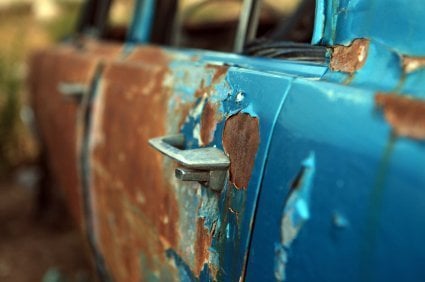
It is better to buy a car free from rust and corrosion. Once corrosion finds its way into the bodywork of a car, it is very difficult and expensive to remove it successfully. Corrosion also weakens the structure of a car if it is located on the chassis and frame section close to the suspension areas. Always look underneath the sides and rear of the car to assess the level of corrosion. It is best to avoid buying a rusted car unless you do not have a choice!
Once the vehicle inspection is complete its time to check the documents.
Registration Book
This is the title book containing the vehicle and owner information. The registration book also contains the stamp of the Excise and Taxation department showing the date up to which the tax has been paid. Match this date with the tax paid date on the motor vehicle’s tax receipt.
Motor Vehicle Tax Receipt
This is a computer generated document which shows the vehicle information and the date up to which the motor vehicle tax has been paid.
Verification of the Documents
Before buying any used car the buyer is advised to visit the local Excise and Taxation department where the vehicle’s documents can be verified for authenticity. Before visiting the Excise and Taxation department, the buyer must have the vehicle’s registration, chassis and engine number ready.
To check vehicle and owner information you can visit here Online Vehicle Verification is available for most regions.
How to report CPLC about Vehicle

















